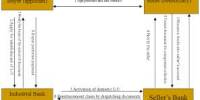Financial Statements as a source of Accounting Information
Many individuals and organizations use financial statements to improve business decisions. Investors and creditors use them to assess company prospects for investing and lending decisions. Boards of directors, as investor representatives, use them to monitor managers’ decisions and actions. Employees and unions use financial statements in labor negotiations. Suppliers use financial statements in setting credit terms. Investment advisors and information intermediaries use financial statements in making buy-sell recommendations and in credit rating. Investment bankers use financial statements in determining company value in an IPO, merger, or acquisition.
Financial statements help to analyze a company’s Strategic goals and its business environment. Financial statement analysis is an integral and important part of the broader field of business analysis. Business analysis is the process of evaluating a company’s economic ‘prospects and risks. This includes analyzing a company’s business environment, its Strategies, and its financial position and performance. Business analysis is useful in a wide rang of decisions such as whether to invest in equity or in debt securities, Whether to extend Credit through short- or- long-term loans, how to value a business in an initial public offering (IPO),and how to evaluate restructuring including mergers, acquisitions, and divestures. Financial statement analysis is the application of analytical tools and techniques to general-purpose financial Statements and inferences useful in business analysis. Financial statement analysis reduces reliance on hunches, guesses and intuition for business decisions. It decreases the uncertainty of business analysis.
Major Financial Statements:
- Income Statement
- Balance Sheet
- Statement of Shareholders’ Equity
- Statement of Cash Flows
Balance Sheet:
The accounting equation (also called the balance sheet identity) is the basis of the accounting system. One side of this equation relates to the resources controlled by a company, or assets. These resources are investments that are expected to generate future earnings through operating activities. To engage in operating activities, a company needs financing to fund them.
Another side of this equation identifies funding sources. Liabilities are funding from creditors and represent obligations of a company or, alternatively, claims of creditors on assets. Equity (or shareholders’ equity) is the total of (1) funding invested or contributed by owners (contributed capital) and (2) accumulated earnings in excess of distributions to owners (retained earnings) since inception of the company. From the owners’, or shareholders’ point of view, equity represents their claim on company assets.
A Balance sheet summarizes the financial position of a company at a point in time. Most companies report a classified balance sheet. In a classified balance sheet, assets and liabilities are separated into current and non-current amounts. An individual person can get some sorts of information regarding a company’s overall activities and performance from a classified Balance sheet . That is, if a company is profitable both investing (assets) and financing (equity) levels increase. Similarly, when a company is unprofitable, both investing and financing decline.
Income Statement :
An income statement measures a company’s financial performance between Balance Sheet dates. It is a representation of the operating activities of a company. The Income statement provides details of revenues, expenses, gains, and losses of a company for a time period. The bottom line, earnings (also called net income)indicates the profitability of the company. Earnings reflect the return to equity holders for the period under consideration, while the line items of the statement detail how earnings are determined.
The income statement includes several other indicators of profitability. Gross profit (also called grossmargin)is the difference between sales and cost of sales (also Called cost of goods sold).It indicates the extent to which a company is able to cover costs of its products.
Analyzing company profitability is a major part of financial statement analysis. All financial statements are pertinent to profitability analysis, but none is more important than the income statement. The income statement reports a company’s operating result over a period of time. Income statement plays an important role in determining company value, solvency and liquidity.
Income statement is critically important for all users but especially for equity investors and creditors. For equity investors, income is often the single most important determinant of changes in security values. Measuring and forecasting income are another most critical tasks of investors. For creditors ,income and operating cash flows are most common / and desirable sources of interest and principal repayments.
Earnings from operation refer to the difference between sales and all operating costs and expenses. Earnings before taxes, as the name implies, represents earnings from continuing operations before the provision for income tax. Earnings from continuing operation are the income from a company’s continuing business after interest and taxes. Earnings arc determined using the accrual basis of accounting. Under accrual accounting, revenues arc recognized when a company sells goods or renders services, independent of receiving cash. Similarly, expenses are matched to these recognized revenues, independent of paying cash.
Statement of shareholders’ equity:
The statement of Shareholders equity reports changes in the accounts that make up equity. This statement is useful in identifying reasons for changes in equity- holders claim on the assets of a company.
Usually details of these changes are shown under five columns:
- Common Stock,
- Additional Paid-In Capital,
- Retained Earnings,
- Accumulated Other Comprehensive Income (Loss), and
- Treasury Stock.
Common Stock and Additional Paid. In Capital together represent Contributed Capital and are often collectively called share capital.
Statement of Cash Flows
Earnings do not typically equal net cash flows, except over the life of a company. Since accrual accounting yields numbers different from cash flow accounting, and we know that cash flows are important in business decisions, there is a need for reporting on cash inflows an outflows. For example, analyses involving reconstruction and interpretation of business transactions often require the statement of cash flows. Also, certain valuation models use cash flows. The statement of cash flows reports cash inflows and outflows separately for a company’s Operating, Investing, and financing activities over a period of time.
Financial statements play an important role in the field of business analysis also. Business analysis is the evaluation of a company’s prospects and risks for the purpose of making business decisions. These business decisions extend to equity and debt valuation, credit risk assessment, earnings predictions, audit testing, compensation, negotiations and countless other decisions.
Business analysis aids in making informed decisions by helping structured the decision task through an evaluation of a company’s business environment, its strategies and financial position and performance.
To show how financial statement information helps in business analysis, let’s turn to the data in the following Table. These data reveal that X Company’s net earnings in 1998 were at their highest level for the past five years. This is despite a sales decline in the previous two years. X Company appears profitable-earnings in 1998 are 10 percent of sales, or 35 percent of shareholders’ equity. However, X Company’s increased profitability has come from cost reduction rather than from increased sales, which have actually declined in the most recent two years. This lack of sales growth does not bode well for the future. Still, X Company continues to pay a steady dividend to shareholders and, using its average 1998 price of $73.40, its stock trades at more than 17 times earnings and 6 times book value of equity.
















